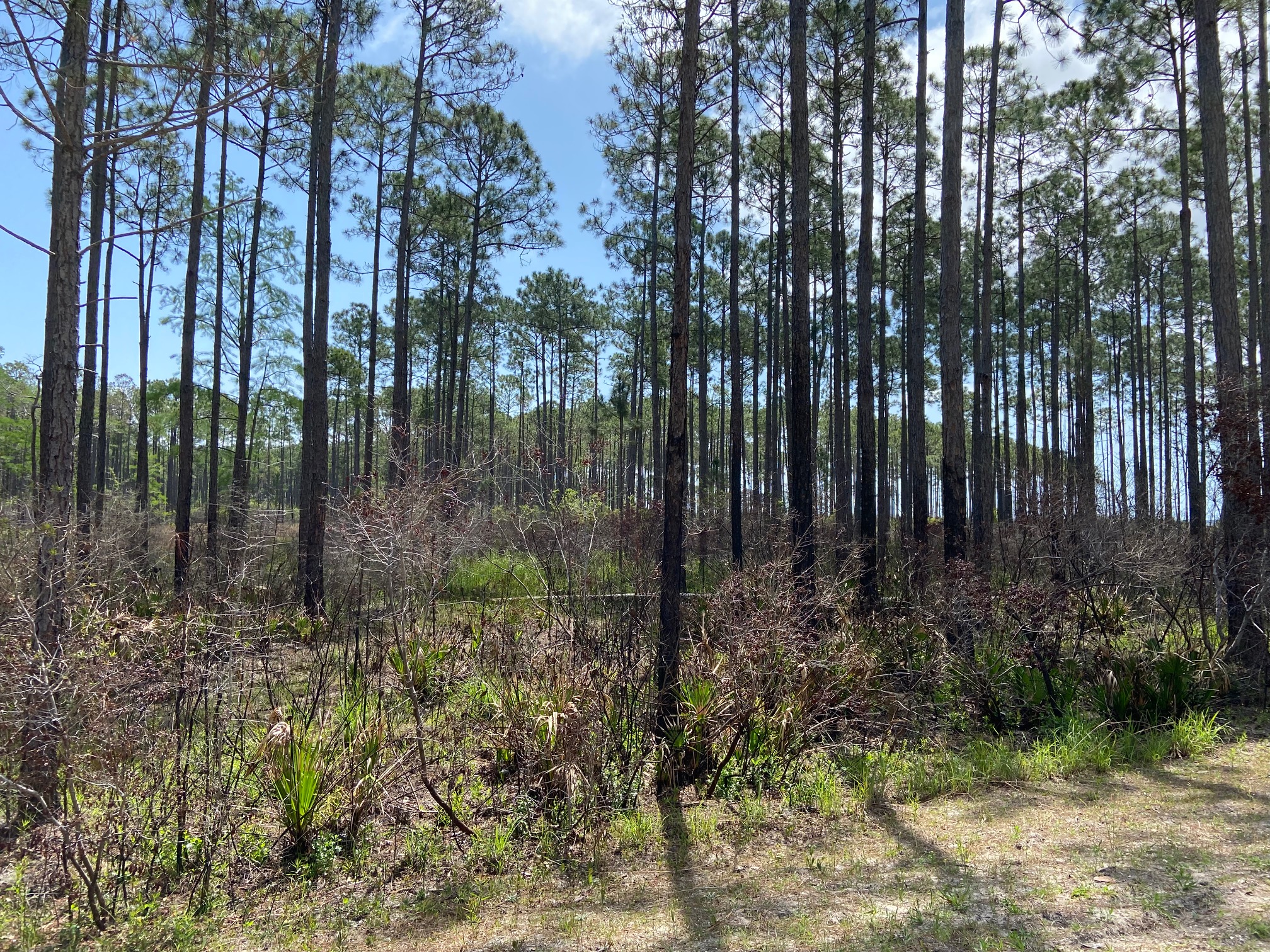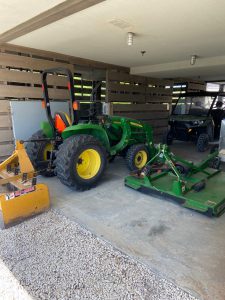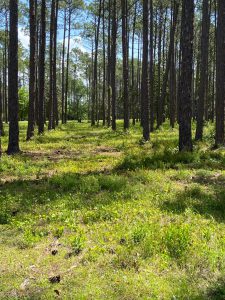With wet growing seasons and multiple significant storms in the past several years bringing down many trees and/or limbs, it is quite likely that unmanaged forest lands throughout the Panhandle have a high fuel load for potential forest fires. These high fuel conditions can directly or indirectly impact your agriculture business and home. With wet growing seasons comes excessive undergrowth in forest areas. The other side of this is how quickly these now overgrown plant understories dry during extended low rainfall times, leading to potential out of control wildfires.
Planning and preparing for potential wildfires should be a part of the overall management plan. How do you create fire-resistant or defensible spaces near barns, homes and other areas? It starts with landscape features around or near these structures designed to reduce vulnerability to wildfire losses. For additional information visit this UF IFAS publication: Fire in the Wildland-Urban Interface: Selecting and Maintaining Firewise Plants for Landscaping.
When defensible spaces are created, they begin at the base of the building and extend out for a significant distance forming a buffer zone with minimal fuel. This does not mean the area has to be devoid of plants but rather the plants must be properly selected, pruned and placed. This defensible space can extend 100 plus feet out from the building. Additionally, in the defensible space the grass should be mowed, low hanging limbs pruned and any other potential sources of fuel addressed.
Do not allow trees branches any closer to a building than 10 feet (more than 10 is even better). Be cautious of ladder fuels which can allow wildfire to climb from the ground up into tree canopies. Ladder fuels often involve plants that are too closely spaced in beds of heavy pine straw under or near plants or trees. Maintaining open vertical space between plants is critical. Infrequently mowed grasses can also allow the fire to reach upward to next level of plants and continue build flames into the tree canopy.
–
Managing planted or natural forest areas can occur in several ways to reduce wildfire potential. Work with your county forester or a consultant to determine how to best include prescribed burns into your forest management plan. If your forest is a pine plantation and a prescribed burn is not feasible, another option is to mow the understory plants with a tractor and mowing unit. Once a year during the winter should be enough to manage the amount of fire plant fuel levels. Maintaining improved pastures, roadways, and grass buffer lines are also good steps in protecting an agriculture enterprise and home. Keep in mind the Panhandle has rainy and dry seasons, work to be prepared for both.
- Land Management to Enhance Wild Turkey in the Panhandle - September 29, 2023
- Healthy Forest Management - April 14, 2023
- Benefits of a Forestry Consultant - October 7, 2022



